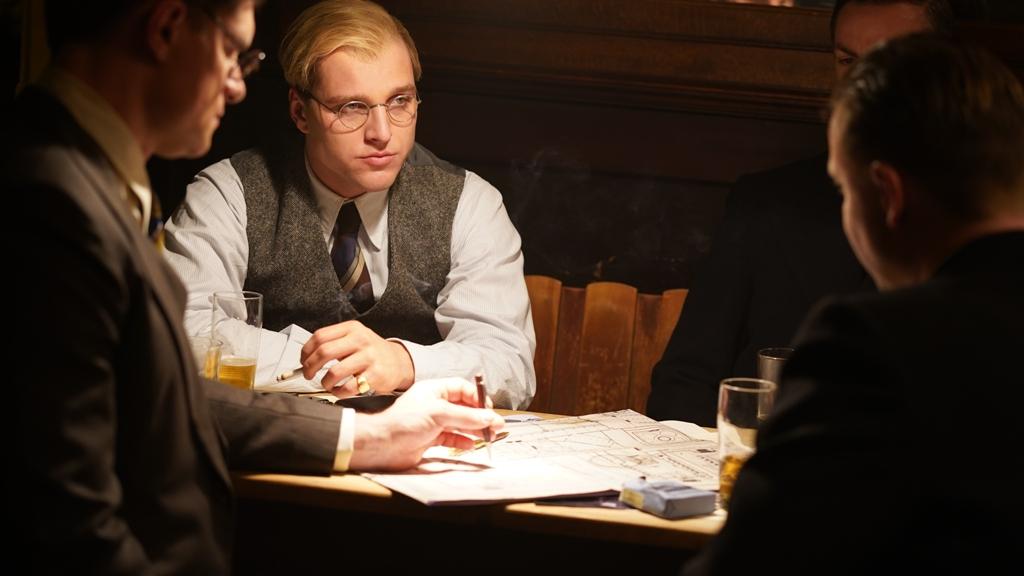NR | 2h 13m | Documentary, Biography, Film History | 2024
In addition to being (arguably) the world’s premier living movie director, Martin Scorsese is also one of the most ardent and unabashed fans and historians of the medium itself. With the possible exception of Quentin Tarantino, Scorsese’s encyclopedic knowledge and insight into films most people have never heard of is beyond astonishing.
Known mostly for his movies about organized crime (which accounts for less than 10 percent of his entire output), Scorsese has also directed 16 feature documentaries, most of them related to film or music.
A Scorsese picture in all but name, “Made in England: The Films of Powell & Pressburger” (“Made in England”), directed by David Hinton, has him presenting and narrating a documentary about the careers of filmmakers Michael Powell and Emeric Pressburger.

18 in 18
Over the course of 18 years (1939–57), Powell and Pressburger produced an equal number of films. All but two were very good; at least a half dozen could be considered excellent. After they amicably dissolved their partnership, the men teamed up again in 1966 and 1972 with fair to middling results.Even by today’s standards, the working relationship between the two men was an anomaly, as they more or less shared production, direction, and writing duties. There have been a mere handful of similar duos since. Only the Coen brothers (20 features over 34 years) are even close to being in the same ballpark.
Hinton and Scorsese open the film in what is an initially awkward, yet ultimately brilliant manner. The first 10 minutes is dedicated to Scorsese’s childhood that was regulated to the indoors because of his chronic asthma, kick-starting his lifelong love affair with movies.

Superb Preamble
Scorsese describes being mesmerized while watching “The Thief of Bagdad,” “The Tales of Hoffmann,” and “The Red Shoes” on a 16-inch, black-and-white TV with split-screen, side-by-side images of restored color prints of the films. Later on, Scorsese and Hinton did the same thing with these same movies and scenes from Scorsese’s films. In “Mean Streets,” “Taxi Driver,” “The Age of Innocence,” and “GoodFellas,” Scorsese duplicated the groundbreaking camera work, framing, and color scheme techniques.What impressed me most was the considerable time devoted to Powell and Pressburger’s first six efforts, all of them war flicks.

War Propaganda
After the success of their first (“The Spy in Black”) and second (“Contraband”) films, both World War I movies, the British Ministry of Information approached Powell and Pressburger to make a World War II propaganda feature ostensibly for the purpose of boosting morale.Propaganda filmmaking, practiced on the both sides of the fight, was commonplace. American directors John Ford, William Wyler, John Huston, Frank Capra, and George Stevens all made them, but these were mostly cut-and-dry documentaries. Powell and Pressburger’s “49th Parallel” was a live-action drama, as were three more subsequent WWII-themed releases.
The standout of these was the 1943 “The Life and Death of Colonel Blimp,” starring Deborah Kerr. Considered by some to be the finest British film ever made, the satirical, tongue-in-cheek “Blimp” ruffled many feathers—including those of Prime Minister Winston Churchill, who never actually watched it.
The Masterpieces
No two of them alike, “I Know Where I’m Going,” “A Matter of Life and Death,” “Black Narcissus,” and especially “The Red Shoes” were all years ahead of their time. Along with Scorsese, Francis Ford Coppola, Brian De Palma, George A. Romero, George Lucas, and Clint Eastwood credit these late 1940s Powell and Pressburger productions as major influences on their work.
Without going into too much detail, Scorsese’s personal relationship with Powell beginning in the 1970s occupies a great deal of the third act. This was a friendship that led to Scorsese’s long-term professional association with his stalwart editor Thelma Schoonmaker.
Plenty of feature documentaries deal with film history. But as good as they might be, far too many are arid, detached, and clinical, and are severely lacking in heart and soul.
Scorsese’s excitement here is obvious but not gushing, and always in check. It’s also highly infectious. For anyone wanting to expand their knowledge and understanding of the film medium, “Made in England” is absolutely essential viewing.








